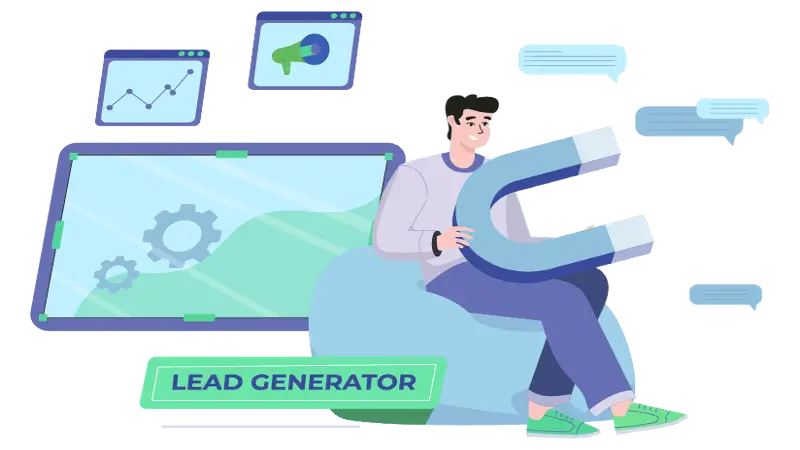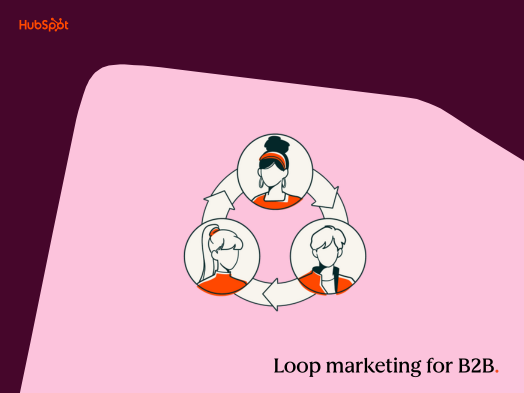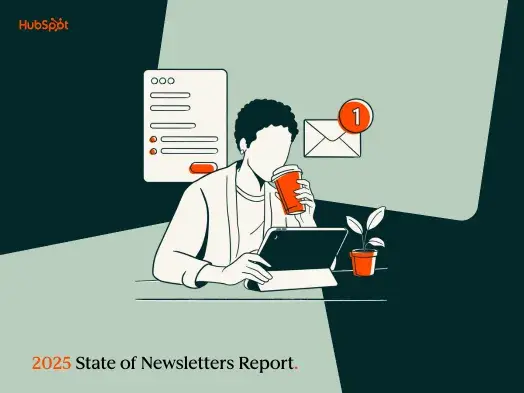Are you targeting the right audience or just an audience? The digital landscape presents a sea of potential leads, but capturing those that convert is the real challenge. However, platforms like LinkedIn, combined with strategic paid advertising, offer a pathway to precision. These tools enable you to target your ideal audience with accuracy, transforming potential challenges into growth opportunities.
Let’s explore how to leverage these platforms for maximum impact.
Targeted lead generation is more than just casting a wide net; it’s about pinpointing the individuals most likely to become valuable customers. Today, where attention spans are fleeting, and competition is fierce, precision is paramount. Businesses simply can’t afford to waste resources on unqualified leads. The challenge lies in achieving a high return on investment (ROI) amidst this digital noise. This is where platforms like LinkedIn and paid advertising (PPC) come into play.
They offer the tools to refine your approach, allowing you to focus on those who truly matter to your business. Specifically, in the B2B sector, where decision-making is often complex and involves multiple stakeholders, targeted lead generation becomes even more critical. Understanding how to leverage these platforms effectively can make the difference between a successful campaign and a wasted budget.
Paid Advertising: Where Dollars Meet Data
The world of paid advertising is a diverse ecosystem of platforms, each with its own language and strengths. This isn’t just a trend; it’s a fundamental shift in how businesses connect with their audiences. We’re seeing a move away from the “spray and pray” approach, where ads were broadly targeted, towards a more refined, data-driven strategy. To truly harness its potential, we need to understand the subtle nuances of each channel.
Google Ads
Think of Google Ads as your intent-catcher. When someone actively searches for a solution, Google Ads puts your offering front and center, capturing that immediate interest. This is crucial for reaching users who are actively seeking what you provide, translating to higher conversion rates.
On the flip side, social media platforms like LinkedIn, Facebook, and Instagram allow for a more nuanced approach. You’re not just targeting keywords; you’re targeting people–their demographics, interests, and behaviors. For example, on LinkedIn, you can pinpoint professionals by job title and industry, connecting with decision-makers directly. On Instagram, you can connect with consumers based on their lifestyles and passions, building brand awareness and engagement.
Search Engine Marketing
And then there’s Search Engine Marketing (SEM), the art and science of driving targeted traffic. It’s not just about throwing money at ads; it’s about understanding the user’s journey. What are they searching for? What language do they use? Meticulous keyword research and compelling ad copy are your tools here. Long-tail keywords, for instance, capture those with specific needs, leading to higher conversion rates. And ad copy that speaks directly to a user’s pain points? That’s what drives clicks and engagement.
Consider the impact of A/B testing ad variations, refining your message based on performance data to optimize for maximum impact. Each platform requires a tailored strategy, and understanding the nuances of each, and how they play together, is key to success.
In essence, mastering the landscape of paid advertising means understanding these platform-specific strengths and leveraging SEM to its fullest potential.
LinkedIn: A Goldmine for B2B Lead Generation
LinkedIn stands as a unique and powerful platform in the realm of B2B marketing. It’s not just another social network; it’s a professional ecosystem where connections translate directly into business opportunities. With over 800 million members, a significant portion of whom are key decision-makers, LinkedIn offers unparalleled access to a targeted professional audience. This isn’t just about reaching a large number of people; it’s about reaching the right people.
Leveraging LinkedIn Ads allows for precise targeting, going beyond basic demographics. You can pinpoint potential leads based on job title, industry, company size, and even specific skills. Imagine being able to deliver your message directly to CEOs of mid-sized tech companies or marketing directors in the financial sector. This level of granularity ensures that your advertising efforts are focused and efficient, maximizing your ROI.
It’s important to note that creating compelling LinkedIn ad campaigns requires a different approach than on other social media platforms. The key is relevance and personalization. Professionals on LinkedIn are looking for valuable insights, industry knowledge, and solutions to their business challenges. Generic, flashy ads won’t cut it. Instead, focus on content that speaks directly to their professional needs, offering actionable advice and demonstrating your expertise. Personalized messaging, tailored to specific job roles or industries, can further enhance engagement and drive conversions.
What truly sets LinkedIn Ads apart is its professional focus. Unlike other social media platforms where personal and professional lives often blend, LinkedIn maintains a clear, business-oriented environment. This allows for deeper, more meaningful B2B connections. When you advertise on LinkedIn, you’re not just reaching an audience; you’re engaging with a community of professionals who are actively seeking business solutions and partnerships. This professional context fosters trust and credibility, making LinkedIn an invaluable tool for B2B lead generation.
Optimizing Paid Campaigns for Maximum ROI
Your work doesn’t end with launching an ad campaign; in fact, it’s just the beginning. The real work lies in optimizing for maximum return on investment (ROI). This requires a relentless focus on data analysis and continuous improvement. Key metrics like click-through rates (CTR), conversion rates, and cost per acquisition (CPA) are your compass, guiding you toward more effective strategies. Ignoring these metrics is akin to sailing without a map; you might reach a destination, but it’s unlikely to be the one you intended.
Track and Measure Campaign Performance
To effectively track and measure campaign performance, you need the right tools. Platforms like Google Analytics and LinkedIn Campaign Manager provide invaluable insights into user behavior and campaign effectiveness. Google Analytics, for instance, allows you to track website traffic, user engagement, and conversion funnels, offering a holistic view of your campaign’s impact. LinkedIn Campaign Manager, on the other hand, provides detailed analytics on ad performance, audience demographics, and engagement metrics, enabling you to refine your targeting and messaging.
A/B Testing
A/B testing is another crucial technique for refining your approach. By testing different ad creatives, landing pages, and messaging, you can identify what resonates best with your audience. For example, try testing two different headlines or images to see which generates higher click-through rates. Or experiment with different landing page layouts to see which drives more conversions. This iterative process allows you to continuously improve your campaign performance and maximize ROI.
Budget Management and Strategic Bidding
Finally, budget management and strategic bidding are essential for ensuring efficiency and profitability. Setting realistic budgets and optimizing bids based on performance data can significantly impact your campaign’s success. Don’t just set it and forget it. Regularly review your campaign performance and adjust your bids accordingly. For instance, you might increase bids for high-performing keywords or reduce bids for underperforming ones. Additionally, consider using automated bidding strategies to optimize your bids in real time, maximizing your budget and achieving your desired ROI.
Integrating Google Ads and Social Media Platforms
The true power of digital advertising lies not in isolated campaigns, but in the synergistic integration of different platforms. Google Ads and social media channels, when combined strategically, can create a powerful ecosystem that drives targeted lead generation and maximizes ROI. One key method is retargeting.
For instance, you can use Google Ads to capture initial interest from users actively searching for your products or services. Then, leverage social media platforms like LinkedIn or Facebook to retarget those users with tailored ads, reinforcing your message and driving conversions. This multi-touch approach keeps your brand top-of-mind and nurtures leads throughout the buyer’s journey.
A cohesive cross-platform strategy is essential for maintaining brand consistency and maximizing campaign effectiveness. Aligning messaging and branding across Google Ads and social media ensures a seamless user experience, reinforcing your brand identity and building trust. For example, using consistent visuals and messaging across all platforms creates a unified brand presence, enhancing brand recall and driving higher engagement. This strategic alignment ensures that your audience receives a consistent message, regardless of the platform they’re on.
Consider a case study where a B2B company successfully integrated Google Ads and LinkedIn Ads. They launched a Google Ads campaign targeting specific keywords related to their industry, capturing initial interest from potential leads. Subsequently, they used LinkedIn Ads to nurture those leads with targeted content, such as white papers, case studies, and industry insights. This multi-faceted approach allowed them to capture high-intent leads through Google Ads and then build deeper relationships through LinkedIn, resulting in a significant increase in qualified leads and conversions. This demonstrates the power of integrating different platforms to create a holistic and effective lead generation strategy.
Imagine a B2B software company aiming to generate qualified leads. They launch a Google Ads campaign targeting specific keywords related to their industry, drawing in users actively searching for solutions like theirs. Subsequently, they utilize LinkedIn Ads to nurture these leads with targeted content, such as white papers, industry insights, and client success stories. This approach captures high-intent leads through Google Ads and then builds deeper, more meaningful relationships through LinkedIn, leading to a significant increase in qualified leads and conversions. This illustrates the potential of combining different platforms for a more comprehensive and successful lead generation strategy.
Future Trends in Targeted Lead Generation
The landscape of targeted lead generation is constantly evolving, with emerging technologies and shifting consumer expectations shaping its future. Artificial intelligence (AI) and machine learning are at the forefront of this transformation, automating campaign optimization and delivering unprecedented levels of precision. For example, a platform might analyze user behavior patterns to predict which ad variations will perform best for specific audience segments, dynamically adjusting bids and creative in real-time. This allows marketers to focus on strategic initiatives while AI handles the granular details of campaign management, leading to more efficient ad spend and higher conversion rates.
Personalized advertising is also gaining prominence. Consumers expect tailored experiences, and dynamic content and personalized landing pages are becoming essential tools. A software company, for instance, could use dynamic content to create landing pages that adapt based on a visitor’s industry. If a visitor from the healthcare sector lands on the page, they’ll see content highlighting how the software addresses specific challenges in healthcare. If a visitor from finance lands on the same page, the content will shift to emphasize financial industry applications.
However, with increased personalization comes increased responsibility. Data privacy and ethical advertising practices are paramount.
-
Transparency: Clearly communicating how user data is collected and used.
-
Compliance: Adhering to regulations like GDPR and CCPA to protect user privacy.
-
Ethical Considerations: Ensuring advertising practices are fair, unbiased, and respectful of user rights.
As we move forward, striking a balance between personalization and privacy will be crucial for building trust and maintaining long-term customer relationships.
Driving Lead Generation Through Strategic PPC
Let’s be clear: simply hoping for the right leads is not a strategy. The digital landscape demands precision, and that’s precisely what platforms like LinkedIn and targeted paid advertising offer. It’s about moving beyond simply reaching an audience, and instead, pinpointing the exact decision-makers who drive your business forward. We’ve explored the tools, the techniques, and the future of this approach. The question now is, are you prepared to implement them?
This isn’t about vague promises; it’s about data-driven actions that yield real results. If you’re ready to see a tangible shift in your lead generation, let’s talk. Aspiration Marketing can provide the strategic precision your business needs.
Reach out today, and let’s craft a plan that transforms potential into profit.
Source link









